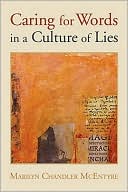Celebrating Christmas
The Truth Behind the Traditions
Joyeux Noël! Frohe Weihnacht! Buon Natale! Feliz Navidad! Christmas (literally “Christ’s Mass”) is celebrated in over 160 countries by Christians and non-Christians alike. Each country has its own unique traditions and its own way of saying "Merry Christmas." And, yet, though the Christian in Germany and the Christian in New York may celebrate the holiday quite differently, they both are united in their purpose of commemorating the birth of Jesus the Messiah.
Because of its ethnic diversity, the United States boasts a wide range of Christmas traditions. When the average American decorates his Christmas tree, sings songs about Santa Claus, and sends Christmas cards, he is celebrating Christmas traditions taken from all around the world.
So, where exactly do those traditions come from? Read on to find out the history behind many of America's classic Christmas traditions (and wow your friends and relatives this holiday season with your knowledge of Christmas trivia).
The Truth Behind Santa Claus
Americans know Santa Claus as the jolly, rotund, white-bearded man who on Christmas Eve flies across the night sky in a sleigh pulled by nine reindeer. Many parents tell their children that Santa Claus brings the presents that seem to have magically appeared under the tree on Christmas morning. Most of Old Saint Nick's trappings are mythical, but he is actually based on a real person: a fourth century bishop of Myra in Asia Minor (Turkey). St. Nicholas was renowned for his kindness and generosity. In one story, a poor man had no money for his three daughters' dowries and, thus, the daughters could not get married and would be forced into prostitution. The story goes that Nicholas saved them by secretly tossing bags of gold down their chimney.
Unfortunately, Santa Claus has come to be seen as a secular symbol of Christmas -- a fact that would undoubtedly have outraged the bishop. In fact, St. Nicholas was known for his fiery temper. In 325 AD, Nicholas was a delegate at the Council of Nicaea (convened to settle questions regarding Christ's deity). During the proceedings, Nicholas became so enraged at Arius (who opposed the Trinitarian Christology) that Nicholas punched him. Of course, this behavior landed Nicholas in hot water and he was nearly stripped of his office, but the council eventually forgave him. One wonders what the real Santa Claus would do to those today who try to minimize the importance of Jesus during Christmastime.
How did St. Nicholas become the Santa Claus we know today? Well, St. Nicholas was quite a popular figure during the Middle Ages, but the Protestant Reformation discouraged the celebration of saints. The legend of St. Nicholas did survive, however, in the Netherlands. According to this article:
Sinterklaas came to America with the Dutch in the 17th and 18th centuries, and it was in the new colonies that he really evolved. The anglicizing of the name — from Sinterklaas to Santa Claus — happened by 1773, when the latter was referenced for the first time, in a New York City newspaper. Santa's waistline expanded in 1809 with the publication of author Washington Irving's book "A History of New York," in which the big man is described as portly and smoking a pipe instead of as a lanky bishop.The Truth Behind Christmas Trees
For the Christian, the Christmas tree has come to symbolize everlasting life found in Christ. However, the tree does have its roots in pagan traditions. Fir trees and branches were used to decorate homes and temples during the ancient pagan winter solstice feasts and the Roman Saturnalia. Yet, there are other explanations for the Christmas tree.
One legend tells of Saint Boniface, an English missionary to the Frankish Empire in the 8th century. In 723, Boniface cut down the Donar Oak (Thor's oak), a tree that marked a sacred religious site of the pagan Germanic tribes. The Germanic peoples believed that Donar (Thor) would strike Boniface with lightning. Instead, "the huge oak was felled by a great gust of wind 'as if by miracle' with Boniface only making one swing of the axe." A fir tree sprang up from the center of the felled oak. The pagan peoples were converted on the spot and agreed to be baptized. They believed the fir tree must be holy and, in order to commemorate the event, they decorated the tree with various ornaments. (Another version goes that they decorated the tree with candles so that Boniface could preach to them at nighttime). Whether or not this legend is true, it is undoubtable that the Christmas tree tradition hails from Germany. Christmas trees were not popular in England until Victorian times when Prince Albert (Queen Victoria's German husband) set up a Christmas tree in Windsor Castle.
There are two other stories that might also explain Christmas trees. One involves medieval mystery plays that were often performed on Christmas Eve. Most medieval Christians were illiterate and the plays would bring to life stories from the Bible, often the stories of Creation and the Fall as December 24th was Adam and Eve day in the early Church calendar. A paradise tree, representing the Garden of Eden, was used to advertise the play.
Another story attributes the origin of Christmas trees to Martin Luther. He went for a walk one winter evening and looked up at the stars through the branches of the fir trees. He thought it was so beautiful that he cut down a fir tree and brought it home for his children. They decorated the tree with candles and decided to continue the tradition every Christmas eve.
You can read more about the history of Christmas trees here.
The Truth Behind Christmas Cards
The first White House Christmas Card was sent by Dwight D. Eisenhower in 1953. According to this article: "The first commercial Christmas cards were commissioned by Sir Henry Cole in London in 1843 and featured an illustration by John Callcott Horsley. The picture of a family with a small child drinking wine together proved controversial, but the idea was shrewd: Cole had helped introduce the Penny Post three years earlier. Two batches totaling 2,050 cards were printed and sold that year for a shilling each."
The Truth Behind Nativity Scenes
Nativity scenes are quite popular during the Christmas season, but are not always accurate to the Biblical story of Christ's birth. For instance, the Bible is silent about the actual number of wise men who followed the star. Matthew 2:1-2 says, "Now after Jesus was born in Bethlehem of Judea in the days of Herod the king, behold, wise men from the east came to Jerusalem, saying, 'Where is he who has been born king of the Jews? For we saw his star when it rose and have come to worship him.'" Nowhere does it specify that there were three wise men.
Further, the Bible does not say that the wise men came to the stable at the same time as the shepherds. Rather, it is more likely that the wise men did not arrive until Jesus was much older (possibly one or two years after his birth). This would make sense because the wise men ask Herod about the child "after Jesus was born." In verse 7, Herod tells them to look for a "young child," not a newborn baby.
When the wise men do not return to Herod, he orders the execution of all male children two years and younger. This would only make sense if there was the possibility that Jesus was two years old. Further, in verses 9 and 11, Matthew tells us: "Behold, the star that they had seen when it rose went before them until it came to rest over the place where the child was...And going into the house they saw the child with Mary his mother, and they fell down and worshiped him." The star did not rest over a stable or an inn, but Mary and Joseph's house.
How, then, did the traditional nativity scene come to be? Why three wise men? And why are they shown at the stable? Most likely the tradition of three wise men came about because three gifts are mentioned in the Biblical story: "Then, opening their treasures, they offered him gifts, gold and frankincense and myrrh."
Nativity scenes began with Saint Francis of Assisi in 1223. He had the idea of recreating the Christmas story in caves with live actors. Most likely, these scenes included the three wise men. It would have been too hard to show the wise men showing up at the cave two years later! Saint Bonaventure in his Life of St. Francis of Assisi writes,
It happened in the third year before his death, that in order to excite the inhabitants of Grecio to commemorate the nativity of the Infant Jesus with great devotion, [St. Francis] determined to keep it with all possible solemnity; and lest he should be accused of lightness or novelty, he asked and obtained the permission of the sovereign Pontiff. Then he prepared a manger, and brought hay, and an ox and an ass to the place appointed. The brethren were summoned, the people ran together, the forest resounded with their voices, and that venerable night was made glorious by many and brilliant lights and sonorous psalms of praise. The man of God [St. Francis] stood before the manger, full of devotion and piety, bathed in tears and radiant with joy; the Holy Gospel was chanted by Francis, the Levite of Christ. Then he preached to the people around the nativity of the poor King; and being unable to utter His name for the tenderness of His love, He called Him the Babe of Bethlehem.The Truth Behind Christmas Carols
The origin of Christmas carols also arose from Saint Francis of Assisi's Nativity Plays. This article explains:
The Truth Behind Wrapping PresentsThe people in the plays sang songs or 'canticles' that told the story during the plays. Sometimes, the choruses of these new carols were in Latin; but normally they were all in a language that the people watching the play could understand and join in! The new carols spread to France, Spain, Germany and other European countries.
The earliest carol, like this, was written in 1410. Sadly only a very small fragment of it still exists. The carol was about Mary and Jesus meeting different people in Bethlehem. Most Carols from this time and the Elizabethan period are untrue stories, very loosely based on the Christmas story, about the holy family and were seen as entertaining rather than religious songs. They were usually sung in homes rather than in churches! Traveling singers or Minstrels started singing these carols and the words were changed for the local people wherever they were traveling.
The tradition of wrapping Christmas presents dates to the Victorian era. However, only the wealthy could afford expensive gifts and elaborate wrapping paper. Thus, wrapping Christmas presents was a practice reserved for the upper classes. This article explains the origins of wrapping paper in the United States:
In the United States, gift wrapping began to be popular in the early 1920’s. Plain tissue paper in red, green, and white had been used prior to this time. The tissue paper was flimsy and sometimes the colors would bleed. Wrapping paper often fell off of the gift or tore before the gift giving process actually occurred. The industry leader in gift wrap is the Hallmark Company. Yes, Joyce C. Hall, the founder of the company, invented the greeting card and the wrapping paper we use today. Today’s paper is still durable but easily folded. The actual invention of Hallmark’s wrapping paper was an accident and not really an invention. The Hall Brother’s store sold out of the tissue paper during the holiday season of 1917. Decorative envelope liners, made of elaborately adorned paper, began to sell for wrapping use. The liners had been purchased from a French factory. At ten cents a sheet they were snapped up quickly. The next year the Halls displayed the same style of envelope liner wrapping paper at three sheets for twenty-five cents. The marketing plan was a success and followed for many years to come.The Truth Behind Xmas
Many Christians find the term "Xmas" offensive. They believe it is an attempt to take Christ out of Christmas. Surprisingly, however, the X in Xmas is actually the Greek letter chi and the first letter in the Greek word for Christ (Christos). But Xmas should not be pronounced "ex-mas." The correct pronunciation is (you guessed it) -- Christmas.
The image on the left is the labarum, a military standard used by the Roman emperor Constantine I. It represents the first two letters that spell Christos -- chi and rho. Thus, Xmas is an abbreviation for Christmas, but certainly does not take Christ out of Christmas. Perhaps this proves the futility of efforts by the secular word to erase Christianity from the Christmas holiday.
The Truth Behind Mistletoe
Why do we kiss under the mistletoe? Like Christmas trees, the mistletoe is a druidic custom. According to this article:
It is supposed to possess mystical powers which bring good luck to the household and ward off evil spirits. It was also used as a sign of love and friendship in Norse mythology and that's where the custom of kissing under Mistletoe comes from. When the first Christians came to Western Europe, some tried to ban the use of Mistletoe as a decoration in Churches, but many still continued to use it. York Minster Church in the UK used to hold a special Mistletoe Service in the winter, where wrong doers in the city of York could come and be pardoned.In 1820, Washington Irving wrote in his "The Sketch Book of Geoffrey Crayon" that "the mistletoe is still hung up in farm-houses and kitchens at Christmas, and the young men have the privilege of kissing the girls under it, plucking each time a berry from the bush. When the berries are all plucked the privilege ceases."
The Truth Behind Candy Canes
Candy canes were originally white sticks of sugar, peppermint-less and stripe-less. They gained their signature "cane" shape sometime in 1670 when a choirmaster in Germany made the candies resemble shepherd's crooks, and handed them out to children to keep them quiet during the Christmas services. The candy was not flavored with peppermint and was not striped until the 20th century. Some say the candy cane resembles a J and, thus, is a symbol for Jesus. Others say that the three red stripes represent the trinity. Or that the red and white stripes represent Christ's blood and purity. Or that the peppermint flavor represents hyssop, an herb offered to Jesus before he died. However, there is no proof to back up any of these claims. It seems candy canes are just that -- candy canes.
The Truth Behind December 25
Why is Christmas celebrated on December 25? Was Jesus actually born on December 25? Actually, the Bible does not give a date for Christ's birth. It is more probable that Jesus was born in the spring. However, dating Christ's birth to December 25 is an ancient practice. According to this article: "The first recorded date of Christmas being celebrated on December 25th was in 336AD in the time of the Roman Emperor Constantine (he was the first Christian Roman Emperor). A few years later Pope Julius I officially declared that the birth of Jesus would be celebrated on the 25th December." December 25 might have been chosen in an effort to replace pagan holidays with a Christian one. The Winter Solstice and the Roman Saturnalia were celebrated around this date in December. Interestingly, Orthodox and Coptic churches celebrate Christmas on January 7th, and the Armenian Church celebrates it on January 6th. Regardless of the date, it is a special day that Christians set aside to celebrate the miracle of the incarnation -- when God became flesh and dwelt among us. "We have seen his glory, the glory of the one and only Son, who came from the Father, full of grace and truth" (John 1:14).
Merry Christmas! Have a blessed holiday season.
Luke 2, verses 9-14:
And behold, an angel of the Lord stood before them, and the glory of the Lord shone around them, and they were greatly afraid. Then the angel said to them, “Do not be afraid, for behold, I bring you good tidings of great joy which will be to all people. For there is born to you this day in the city of David a Savior, who is Christ the Lord. And this will be the sign to you: You will find a Babe wrapped in swaddling cloths, lying in a manger.” And suddenly there was with the angel a multitude of the heavenly host praising God and saying:
“Glory to God in the highest,
And on earth peace, goodwill toward men!”
Labels: Christmas
Posted by Nicole Bianchi at 10:56 PM
|
![]()












 This is life seen through the eyes of a writer. A blog that critically examines literature, music, and film. NB, initials which coincidently coinside with the Latin words "nota bene" (mark well), belong to the blog poster, a bibliophile who likes to haunt libraries and book stores, talk about all things bookish, and ramble at any length on things regarding literature. Many of the articles posted here were written as essays for high school and college.
This is life seen through the eyes of a writer. A blog that critically examines literature, music, and film. NB, initials which coincidently coinside with the Latin words "nota bene" (mark well), belong to the blog poster, a bibliophile who likes to haunt libraries and book stores, talk about all things bookish, and ramble at any length on things regarding literature. Many of the articles posted here were written as essays for high school and college.





